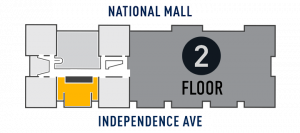This inflight vision tester was supplied by researchers as the main equipment for the S-8, D-13, and M-9 tests of the four Gemini astronauts on the Gemini V and VII missions. Based on a variety of visual cues supplied to test visual acuity and otolithic functions, astronauts recorded their responses with cameras, audio recorders, and on yellow cards inserted into the device. Researchers wanted to test the ability to see a variety of shapes and patterns while in orbit, and also determine to what degree the otolithic membrane (which provides a sense of being upright) in the inner ear was disrupted in weightlessness. These longer duration Gemini missions provided data that would inform doctors on Earth about the effects of prolonged weightlessness on different bodily functions.
NASA transferred this equipment to the Museum in 1973.
Display Status
This object is on display in Destination Moon at the National Air and Space Museum in Washington, DC.

Object Details
Country of Origin
United States of America
Type
EQUIPMENT-Medical
Manufacturer
Scripps Institution of Oceanography, Visibility Laboratory
Dimensions
3-D: 24.8 × 12.1 × 5.4cm (9 3/4 × 4 3/4 × 2 1/8 in.)
Materials
Anodized Aluminum
Plastic
Rubber
Glass
Steel
Cadmium Plating
Coating
Aluminum
Inventory Number
A19740522000
Credit Line
Transferred from NASA
Data Source
National Air and Space Museum
Restrictions & Rights
Usage conditions apply
For more information, visit the Smithsonians Terms of Use.